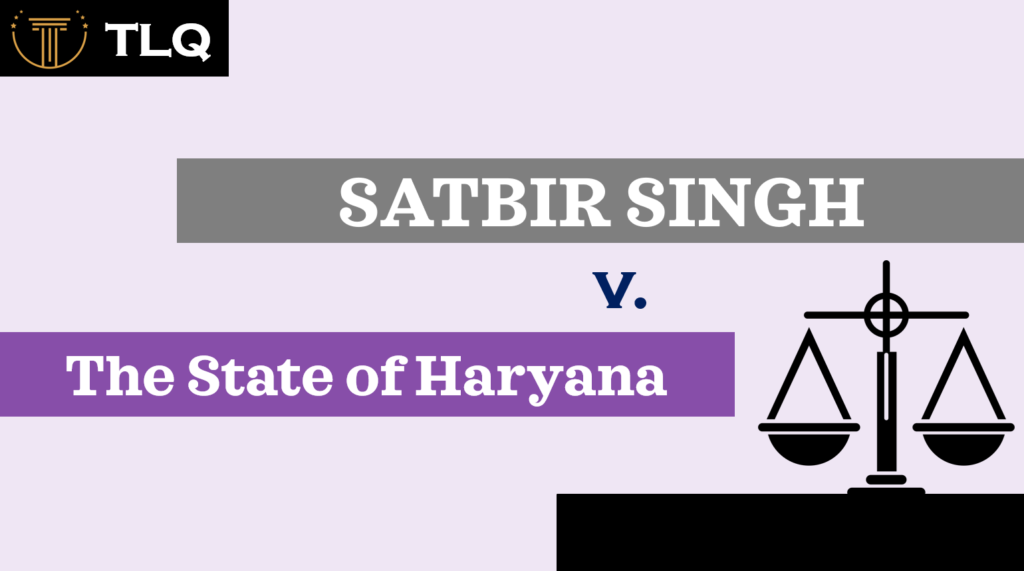Published On: 3rd December, 2023
Authored By: Roshan Jose
Nitte University
Environmental Protection: A Comprehensive Analysis of International, National, and Judicial Aspects
ABSTRACT
Ecology is the fundamental cornerstone of the natural world, representing the intricate balance between human beings and the environment. This interdependence is irrefutable, as the environment, encompassing water, air, and soil, and human beings rely on each other. The surge in population has led to increased resource consumption, with human negligence contributing to the escalating problem of environmental pollution. This article delves into India’s developmental efforts, industrial progress, and the ensuing environmental challenges, emphasizing the need for sustainable development and environmental protection. International conventions, legislative laws, and judicial interventions are pivotal in addressing environmental issues.
INTRODUCTION
The environment constitutes a dynamic interplay of living and non-living elements, significantly influencing human life. Lady Bird Johnson’s definition of the environment as a shared space with mutual interests underscores its importance. The intricate relationship between living and non-living entities has persisted throughout history. However, uncontrolled population growth and resource exploitation without foresight have disrupted this balance, leading to sustainability challenges and environmental degradation.
INTERNATIONAL ASPECT OF ENVIRONMENTAL PROTECTION LAWS
The advent of industrial growth, fueled by scientific and technological advancements, has exacerbated pollution concerns. Two primary contributors to environmental pollution are industrial expansion and human activities. Various international conventions have been convened to address this global issue, with India actively participating and implementing decisions through legislative enactments.
- United Framework Convention on Climate Change (UNFCCC), 1992
- Aimed at stabilizing greenhouse gas emissions and promoting sustainable
- India adopted the convention in 1993, initiating the Environment Action Programme (EAP) known as Agenda 21.
- Vienna Convention for the Protection of the Ozone Layer, 1987
- Focused on reducing the production of ozone-depleting
- Ratified by India in 1992, emphasizing national responsibility in proportion to pollution
- Basel Convention on the Trans-boundary Movement of Hazardous Wastes, 1989
- Aims to protect human life from hazardous waste effects and promote environmentally sound.
- India adopted the convention in 1992, emphasizing waste reduction and environmental
- Convention on Biological Diversity, 1992
- Aim at conserving biological diversity and ensuring fair resource use benefits.
- India adopted the convention in 1994, reflecting a commitment to biodiversity
- Cartagena Protocol on Bio-safety
- International treaty supplementary to the Convention on Biological
- Adopted in 2000 and entered into force in 2003.
CONSTITUTIONAL LAW ON ENVIRONMENTAL PROTECTION
The Constitution of India is not a static document but a dynamic one that evolves. The specific provisions related to environmental protection in the constitution have developed due to the changing nature and growth potential of the fundamental law of the land. The preamble of our constitution guarantees a socialist pattern of society and the dignity of the individual, encompassing a decent standard of living and a pollution-free environment. The Environment (Protection) Act of 1986 defines the environment comprehensively, including water, air, land, and the intricate relationships between them and living beings.
The chapter on fundamental duties in the Indian Constitution explicitly places a duty on every citizen to protect the environment. Article 51-A (g) mandates citizens to protect and enhance the natural environment, including forests, lakes, rivers, and wildlife, and to show compassion for living creatures.
The Directive Principles of State Policy in the Indian Constitution aim to build a welfare state, and a healthy environment is integral to this goal. Articles 47 and 48 emphasize the state’s duty to raise the level of nutrition, standard of living, and public health, which includes protecting and improving the environment. Article 48-A specifically directs the state to endeavor to protect and improve the environment and safeguard forests and wildlife.
Part III of the Constitution guarantees fundamental rights essential for individual development. The right to the environment is recognized as a fundamental right under Articles 21, 14, and 19. Article 21, guaranteeing the right to life, has been liberally interpreted to include the right to a pollution-free and healthy environment. Landmark cases such as the Rural Litigation and Entitlement Kendra case and M.C. Mehta vs. Union of India have affirmed the right to live in a pollution-free environment as part of the fundamental right to life.
Excessive noise, a form of pollution, is addressed under Article 19 (1) (a) and Article 21. The right to live peacefully and the right to a decent environment are protected. The Kerala High Court, in PA Jacob vs. The Superintendent of Police Kottayam, clarified that freedom of speech does not include freedom to use loudspeakers, allowing control over noise pollution.
Article 19 (1) (g) confers the fundamental right to carry on any profession, trade, or business, subject to reasonable restrictions. This includes the inherent safeguards for environmental protection. The courts, as seen in Cooverjee B. Bharucha vs Excise Commissioner Ajmer, emphasize balancing environmental interests with fundamental rights.
Public Interest Litigation (PIL) under Articles 32 and 226 has spurred environmental litigation. Leading cases, including the closure of limestone quarries in the Dehradun region and safeguard installation at a chlorine plant in Delhi, highlight the judiciary’s role in environmental protection. The Vellore Citizens Welfare Forum case recognized the principles of the “Precautionary Principle” and “Polluter Pays Principle” as integral to “Sustainable Development.”
At the local level, Panchayats are empowered by the constitution to take measures for soil conservation, water management, forestry, and environmental protection.
LEGISLATIVE LAW ON ENVIRONMENTAL PROTECTION
- Water (Prevention and Control of Pollution) Act, 1974
- Focuses on preventing water pollution by restricting the discharge of pollutants into water
- Establishes central and state pollution control boards with the authority to set pollution
- Air (Prevention and Control of Pollution) Act, 1981
- Aims to control and prevent air pollution by ensuring ambient air
- Empower central and state boards to take immediate action against air pollution.
- Environment Protection Act, 1986
- Addresses overall environmental standards and coordinates efforts with central and state pollution control
- Empowers authorities to regulate industrial emissions, and waste disposal and decide on industrial.
- Wildlife Protection Act, 1972
- Protects wildlife, flora, and fauna, allowing the government to declare reserved areas for conservation.
- Biological Diversity Act, 2002
- Enacted for the conservation and sustainable use of biological
- Establishes biodiversity authorities at the national and state
- National Environment Tribunal Act, 1995
- Imposes strict liability for damages caused by hazardous substances and provides compensation to victims.
- National Green Tribunal Act, 2010
- Establishes a specialized tribunal for the expeditious disposal of cases related to environmental
JUDICIAL ASPECT OF ENVIRONMENTAL PROTECTION
The judiciary has played a crucial role in implementing environmental laws, with landmark cases shaping environmental jurisprudence in India.
- C. Mehta vs. Union of India (Taz Trapezium Case)
- Addressed chemical and toxic gas emissions affecting the Taj
- resulted in the relocation of hazardous industries and mandated the use of compressed natural
- Ganga Pollution Case (M.C. Mehta vs. Union of India)
- Focused on curbing pollution in the Ganga River basin, leading to the closure of polluting
- Doctrine of Absolute Liability
- Applied in the Oleum Leak case, holding owners of hazardous industries liable for
- Principle of Sustainable Development
- Introduced in the Rural Litigation and Entitlement Kendra case, emphasizing the moral duty to pass on natural resources
- Pollution-Free Environment as a Fundamental Right
- Acknowledged in the Damodar Rao S.O. Municipal Corporation case, affirming pollution-free environment as a fundamental right under Article 21.
Utilizing the International Right to Health in Domestic Climate Change Litigation.
Domestic courts often employ the international right to health as an interpretative tool in climate change litigation. This practice aims to strengthen justifications for prioritizing health over competing interests like economic development and to reinforce environmental protection measures. The international right to health becomes particularly relevant in interpreting vague legislative requirements in climate change laws and assessing breaches of legal obligations under climate change and international human rights laws.
ROLE OF THE RIGHT TO HEALTH IN CLIMATE CHANGE LITIGATION
- Enhancing Accountability Through Health Considerations
Courts may leverage the right to health to assess the adequacy of mitigation and adaptation measures in response to health risks posed by climate change. This application creates a duty of care for governments not only to avoid actions leading to health violations but also to prevent such violations within their borders.
- Defining State’s Duty of Care
Precedents such as Urgenda and Earthlife Africa Johannesburg v. Minister for Environmental Affairs exemplify using human rights standards to delineate the state’s duty of care. This approach clarifies undefined legislative requirements related to climate change laws and principles like public interest and intergenerational justice.
RIGHT TO HEALTH AS A BASIS FOR CLIMATE CHANGE CLAIMS
- Alternative Approach for Damages Claims
Climate change impacts are complex to prove in individual claims for damages due to causation challenges. Alleging that the government failed to fulfill its right to health obligations related to climate change offers a more straightforward route. This focuses on proving the state’s non-compliance with health obligations outlined in human rights documents.
- Three Types of State Obligations
The Committee on Economic, Social, and Cultural Rights (CESCR) identifies three state obligations related to the right to health: to respect, to protect, and to fulfill. These obligations provide a basis for litigants in climate change cases to pursue claims, emphasizing violations resulting from state actions, the regulation of activities, and the adoption of legislative and administrative measures.
OVERCOMING CHALLENGES IN LINKING CLIMATE CHANGE AND RIGHT TO HEALTH
- Fragmentation of Laws
Challenges arise due to the fragmentation of climate change and human rights laws. The integration of systemic considerations in states’ obligations remains a concern. Courts should use human rights norms as interpretative tools to balance public health and economic development concerns in climate change measures.
- Reciprocity in International Climate Change Law
Human rights law alone may not be sufficient, considering the need for mutual action in international climate change law. A lack of reciprocity in human rights law could oversimplify the complex issues of climate change. Integrating climate change law as a tool for the right to health protection becomes essential.
THE HUMAN RIGHTS COUNCIL’S RESOLUTION 48/13 OF OCTOBER 8, 2021
On October 8, 2021, the UN Human Rights Council passed a resolution acknowledging the human right to a clean, healthy, and sustainable environment. While not legally binding, the resolution’s near-unanimous approval signifies global consensus on the essence, content, and significance of this right.
The journey toward this resolution began in September 2020 when a Core Group of States on Human Rights and the Environment initiated informal discussions. By March 2021, 69 States, including previously hesitant ones like Germany, endorsed a statement unequivocally advocating for the recognition of the right. This initiative gained substantial support, with over a thousand NGOs, including notable organizations like Birdlife International, Greenpeace, and Amnesty International, endorsing the cause. Fifteen UN Agencies also expressed support. The leadership of UN Special Rapporteur on Human Rights and Environment David R. Boyd and his predecessor John Knox played a pivotal role in this widespread mobilization.
On October 8, 2021, after a year of persistent advocacy, the Human Rights Council adopted Resolution 48/13 with 43 votes in favor, none against, and 4 abstentions (China, India, Japan, Russia). Despite these abstentions and the absence of the United States from the Council, the resolution’s adoption reflects nearly unanimous international backing for the right to a healthy environment.
The resolution’s first article recognizes “the right to a clean, healthy, and sustainable environment as a human right that is important for the enjoyment of human rights.” It emphasizes the interconnected nature of this right with others under existing international law. The resolution encourages States to take action by enhancing capacities and implementing policies to ensure the realization of this human right.
While the resolution is not legally binding, its adoption signifies a growing consensus in favor of environmental rights. It serves as a symbolic force that may prompt hesitant governments to acknowledge the right to a healthy environment in their domestic legislation. Additionally, it could strengthen the implementation of this right in countries where it is already recognized and pave the way for its inclusion in an international and legally binding text. The resolution acknowledges that it is a preliminary step, urging the UN General Assembly to deliberate on the matter, where a similar resolution may be proposed by participating States.
CONCLUSION AND SUGGESTIONS
In conclusion, the linkage between climate change and the right to health is crucial for the development, implementation, and assessment of effective policies. The dynamic nature of climate change, combined with legal and socioeconomic complexities, necessitates the integration of the right to health values. Overcoming the challenges of fragmented laws and incorporating reciprocity in international climate change law is vital to address the intricate interplay between climate change and the right to health.
Environmental protection is deeply ingrained in our cultural values and traditions. The constitution reflects the framework for the preservation of nature, and awareness of constitutional provisions is crucial for public participation and environmental education. We must protect our paradise, Earth, as emphasized in Atharvaveda, and constitutional knowledge plays a vital role in fostering environmental consciousness and preserving ecology.
Despite the enactment of robust environmental laws, challenges persist, necessitating a holistic approach for effective implementation. Cities grapple with high pollution levels, emphasizing the urgency of raising awareness and fostering collective responsibility. The government should enforce stringent penalties for law breaches while encouraging alternative energy sources like solar and wind power. The solution lies in educating and mobilizing the populace, emphasizing the collective responsibility for a pollution-free environment.




